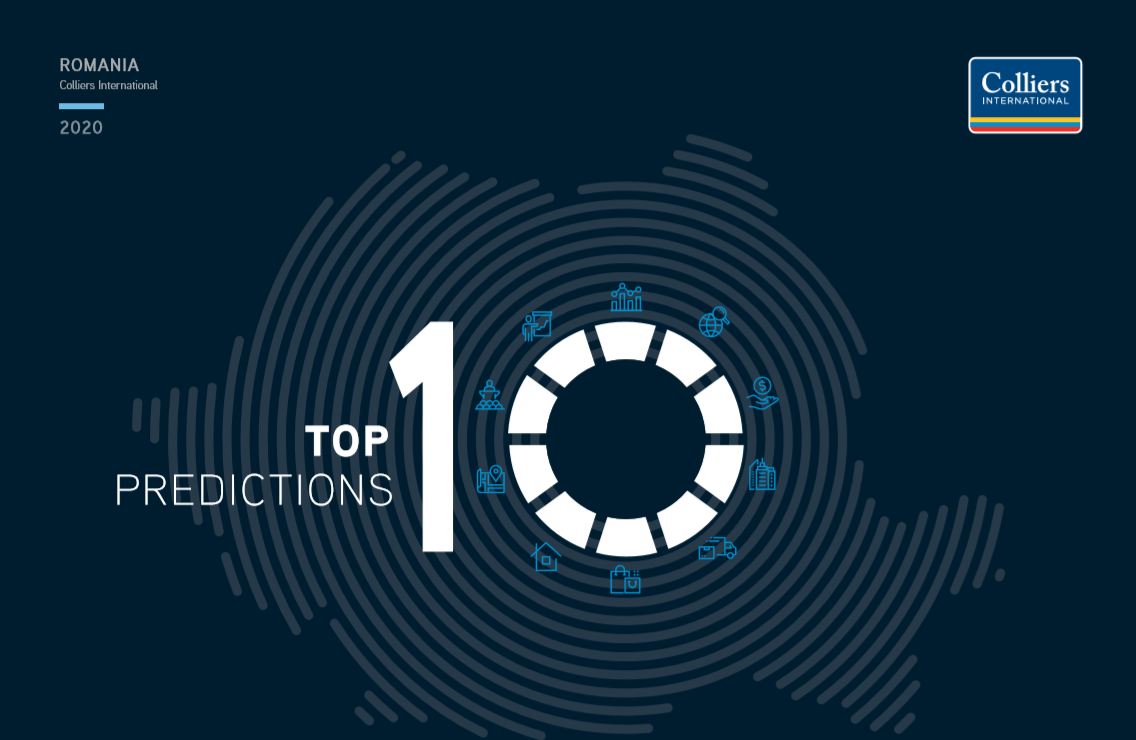The Romanian real estate market is expected to continue displaying robust growth in 2020, but slower than record-setting paces seen in recent years, Colliers International consultants predict. With good potential to generate steady, long-term income, capital appreciation and significant diversification benefits, the real estate segment still offers attractive investment opportunities, especially for investors that can cope with lower liquidity. Last year, constructions and real estate transactions contributed with almost one percentage point to Romania’s 4 percent economic growth achieved in the first three quarters of the year. However, slower economic growth expected in Romania this year, although estimated to outperform most European economies, will influence the evolution of the real estate market.
Romania still features one of the best potential growth rates in Europe, although slower compared to previous years. Major structural reforms in areas like workforce mobility or education could unlock significant growth down the road with fairly little effort, though 2020 does not look like the magic year amid elections, Colliers International consultants predict.
How will the evolution of external markets impact the local market? There are plenty of areas to be worried across the board, like Brexit, shifts in US trade policies, geopolitical tensions, longstanding Eurozone issues and Chinese slowdown. Still, the external backdrop is expected to have a neutral to mildly positive impact regarding the growth forecast for Romania in 2020, says Colliers International consultants.
Even in this context, 2020 may actually be the best year in the post-crisis cycle for the real estate investment market in Romania. There are already in excess of EUR 0.6 billion in deals related to several office projects that could close soon, including the EUR 0.3 billion from the NEPI Rockcastle portfolio, signed, but not closed in 2019, with several buildings on the market that are asking yields below 7 percent. The industrial and retail submarkets are also doing fairly well, though there are some supply-side limitations here. Going forward, Colliers International consultants talk about the deepening of various submarkets, from pure class A office buildings to those with a value-add angle or reconversions. Investments in retail spaces reached high levels of maturity and main differentiator today is the quality, both in the industrial segment, where competition is high, as well as in the office buildings, where more and more investors are interested in obtaining “green” certifications.
Also, it is important to note that Bucharest is gradually becoming a tenant market for office buildings, which will probably be more visible in 2020 – vacancy could near 12-13 percent. Some 0.7 million sqm in new offices are announced for the next couple of years – around a quarter of the current modern office stock. The increased construction costs are somewhat of a novelty, with a direct influence of whether companies relocate or not, since fit-out costs have increased some 25-30 percent, Colliers International consultants predict.
2020 could also bring room for growth for industrial and logistics spaces, given Romania’s extremely low modern industrial and logistics stock of around 4.6 million sqm, half of Czechia’s level and more than 4 times below Poland’s. Some 0.5 million sqm in new storage spaces could come online in 2020, with an increasing share of deliveries coming from developers until recently active on other segments, like offices, residential or retail. This means that 5 million square meters of modern warehouse spaces should be reached this year.
Services and private consumption are still in fairly good shape, but below 2017-2018. For this year, Colliers International consultants are predicting slower, but healthier consumption growth. Landlords will continue to focus on enhancing the customer experience, with a special focus on the leisure segment. Developers will look for synergies: new malls will strive to be attached to an established office area or to add their own office/residential components; including shared office spaces in shopping centres looks attractive as well. The fast expansion of retail schemes in small and medium sized cities still holds.
Regarding the residential property prices, 2019 was a record year for the number of new residential units, but this year is unlikely to keep up. There are signs that construction works are slowing a bit at the turn of the year. As long as the economy manages to squeeze a decent growth rate, Colliers International consultants are expected prices to accelerate a bit compared to the year before, but remain below the expansion rate of wages. Still, some areas, like parts of northern Bucharest may have a bit too much supply.
A gradual cooldown we will see also for the land market. The pipeline in advanced stages is not as generous as in previous years while, at the same time, Colliers International consultants are not seeing as many big deals on the horizon at this current junction. Overall, 2020 is shaping up to be a decent year, but unlikely to rival what we have seen in the 2017-2019 period in terms of transaction volumes.
Last but not least, more and more Romanians living abroad have a high interest in returning home. Romania’s external migration balance could be evened out as soon as 2020, with more and more return migrants, Colliers International consultants predict. Another positive trend is that Romania’s major regional cities are still in the fast-track convergence lane. And looking beyond 2020, the over 3 years election free gap in Romania will be a somewhat unique opportunity to promote major structural reforms, ranging from enhancing the public health and education systems to big progress in major infrastructure projects.







